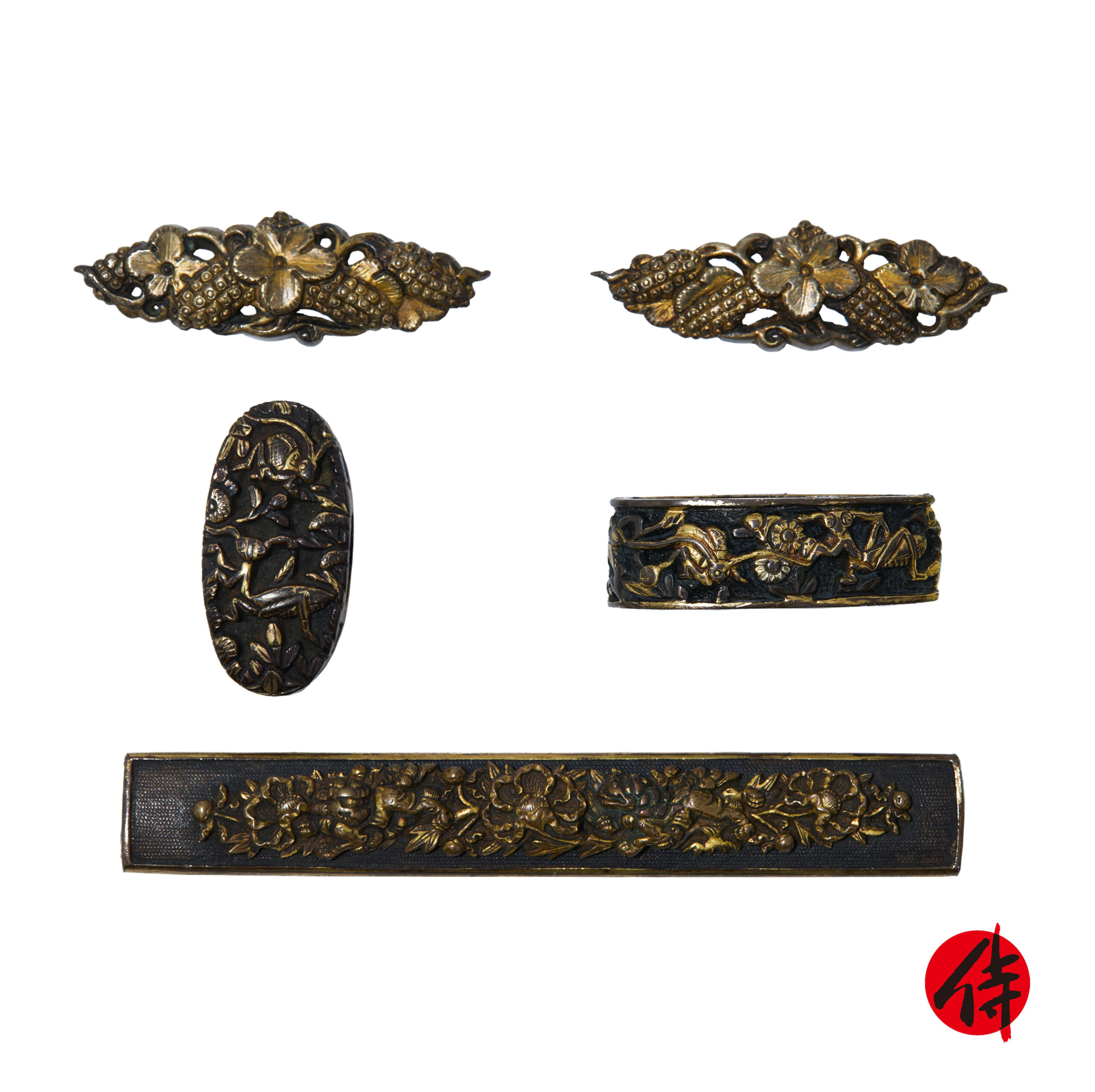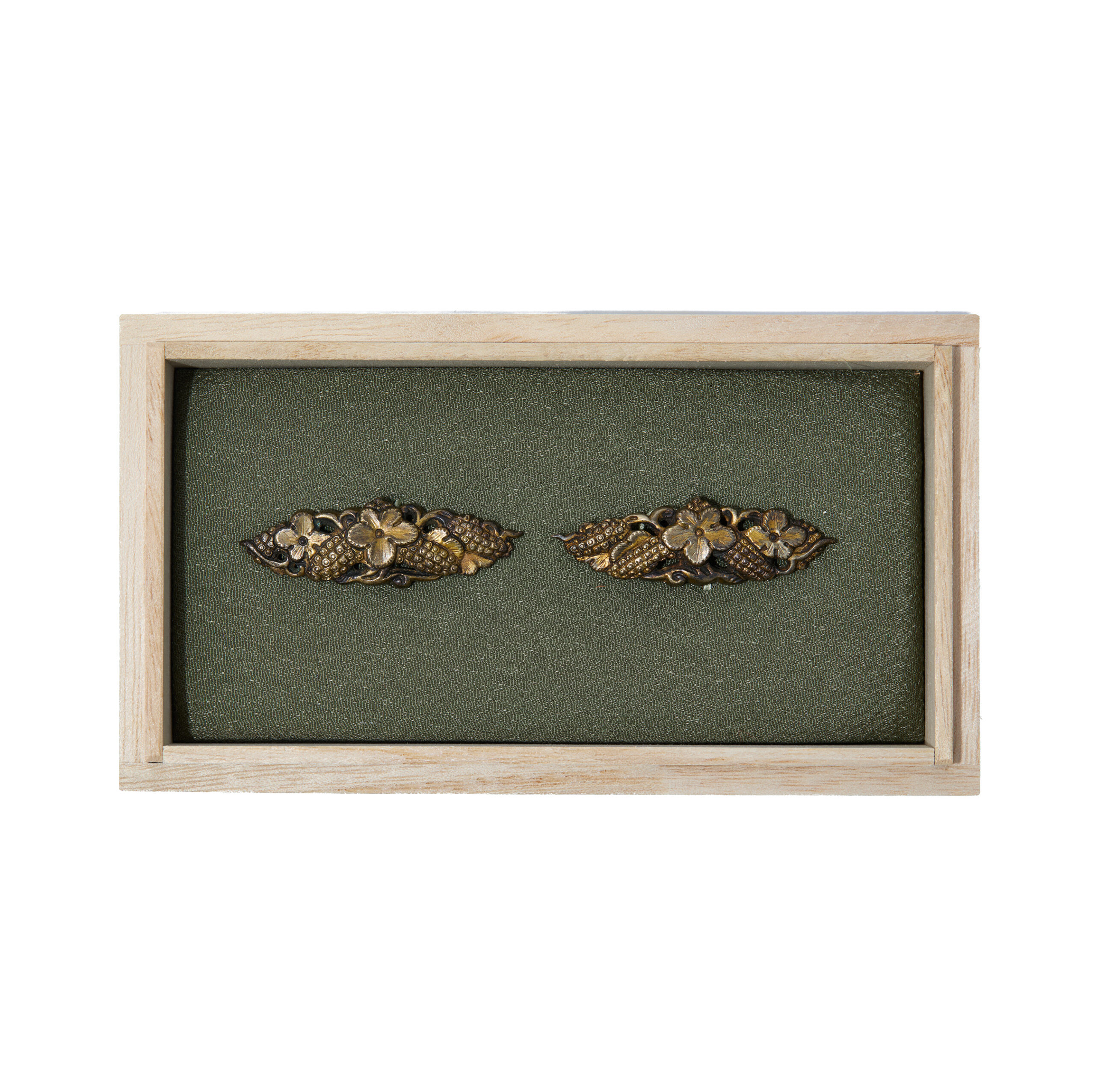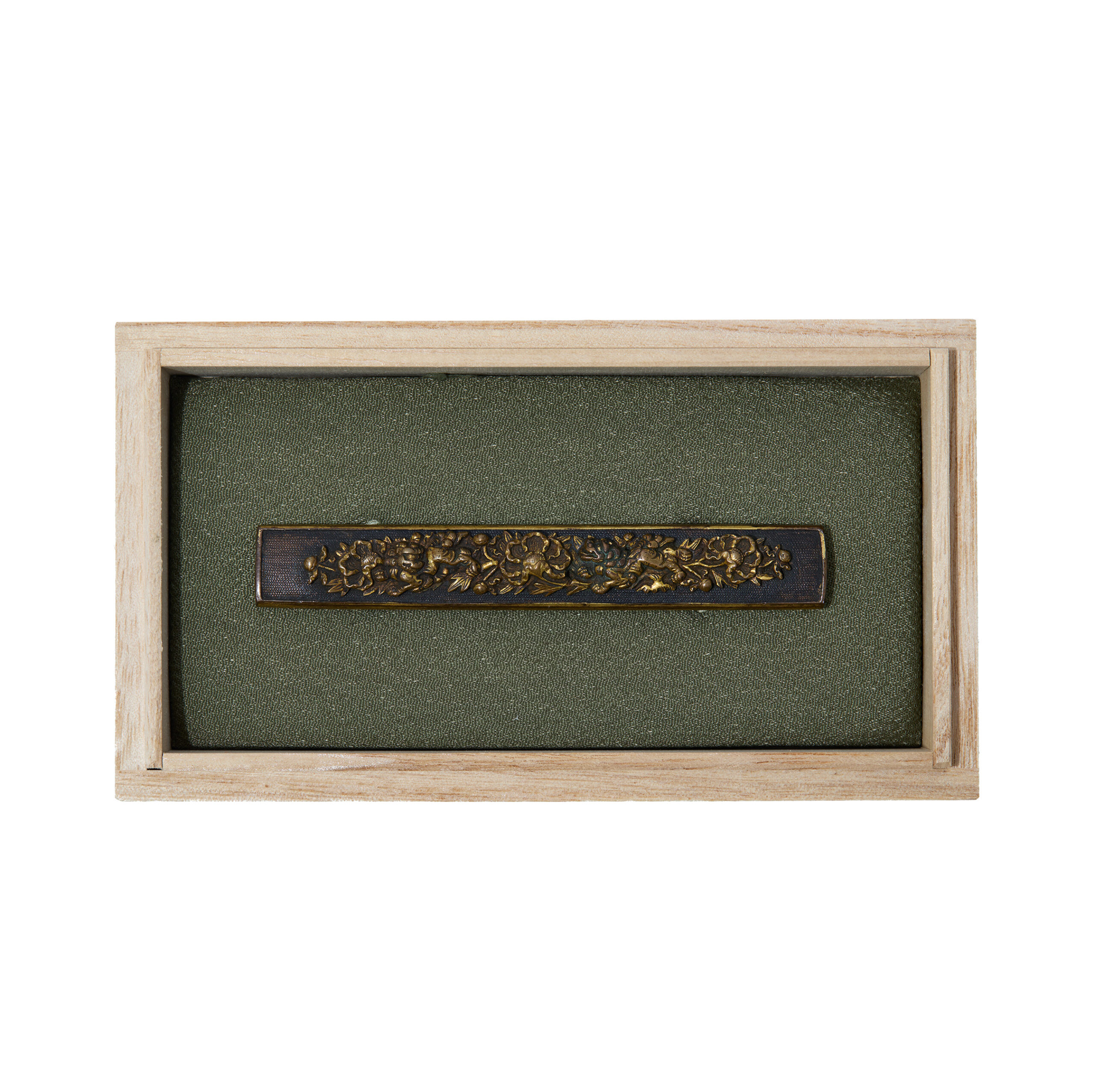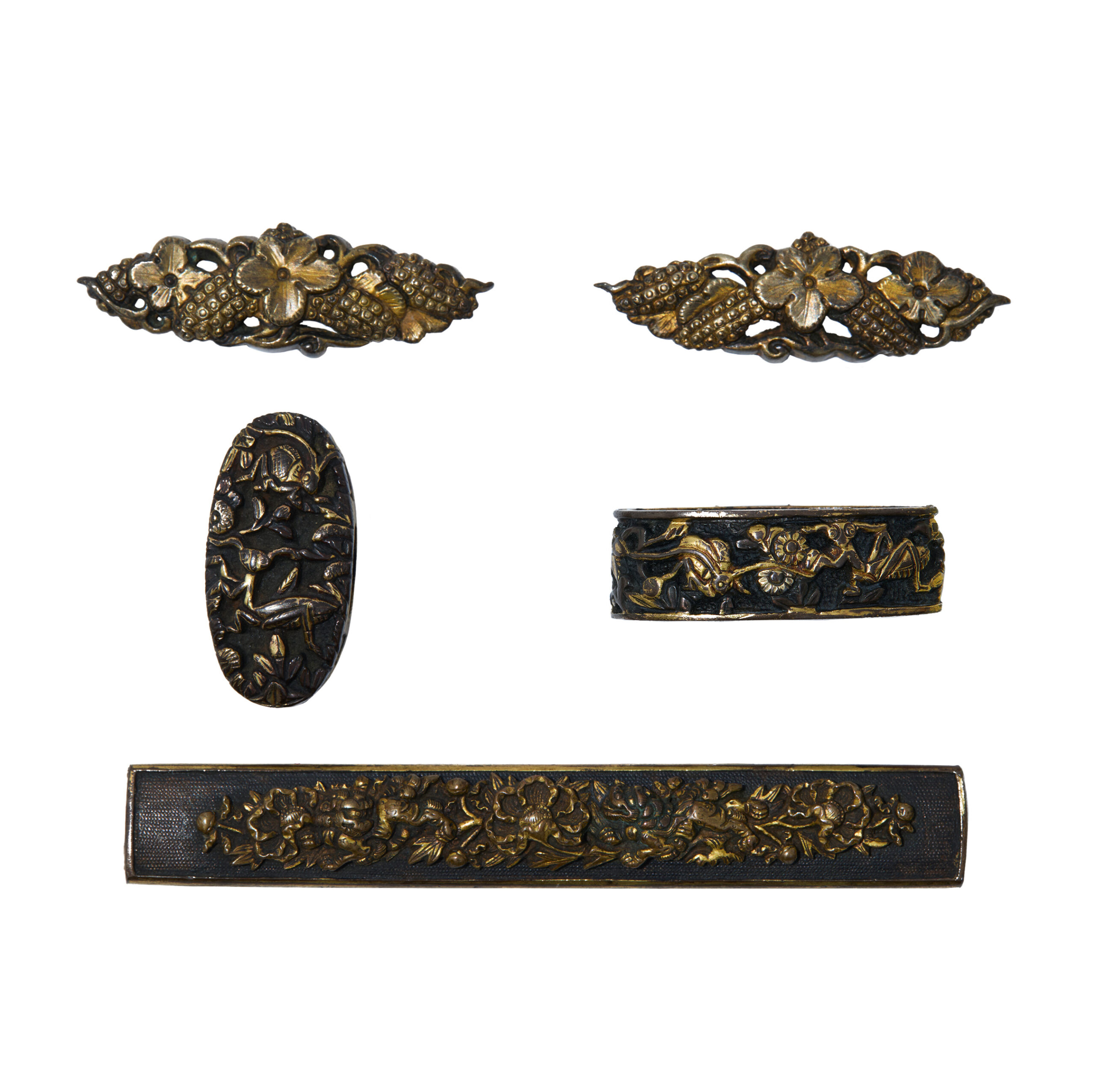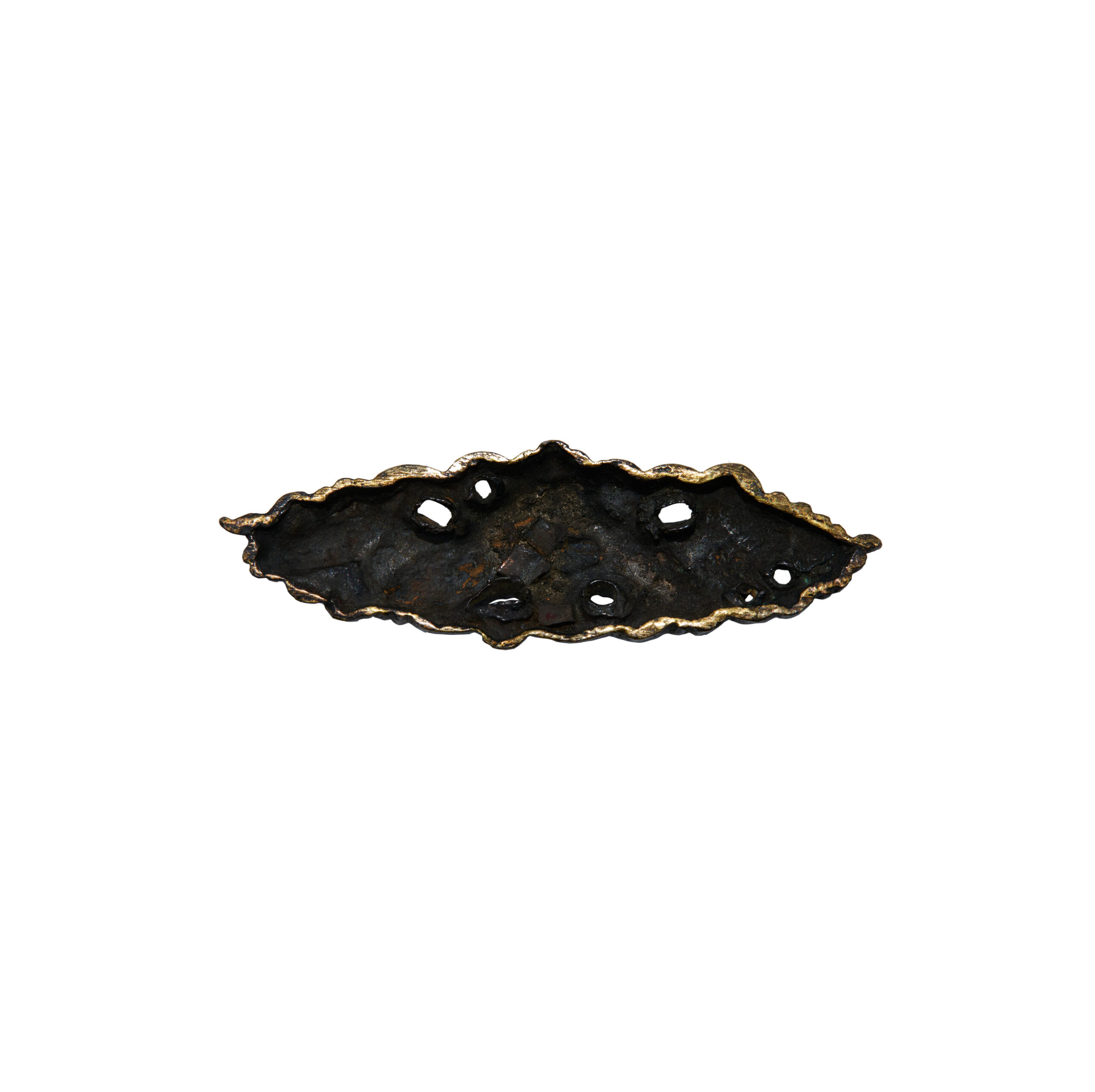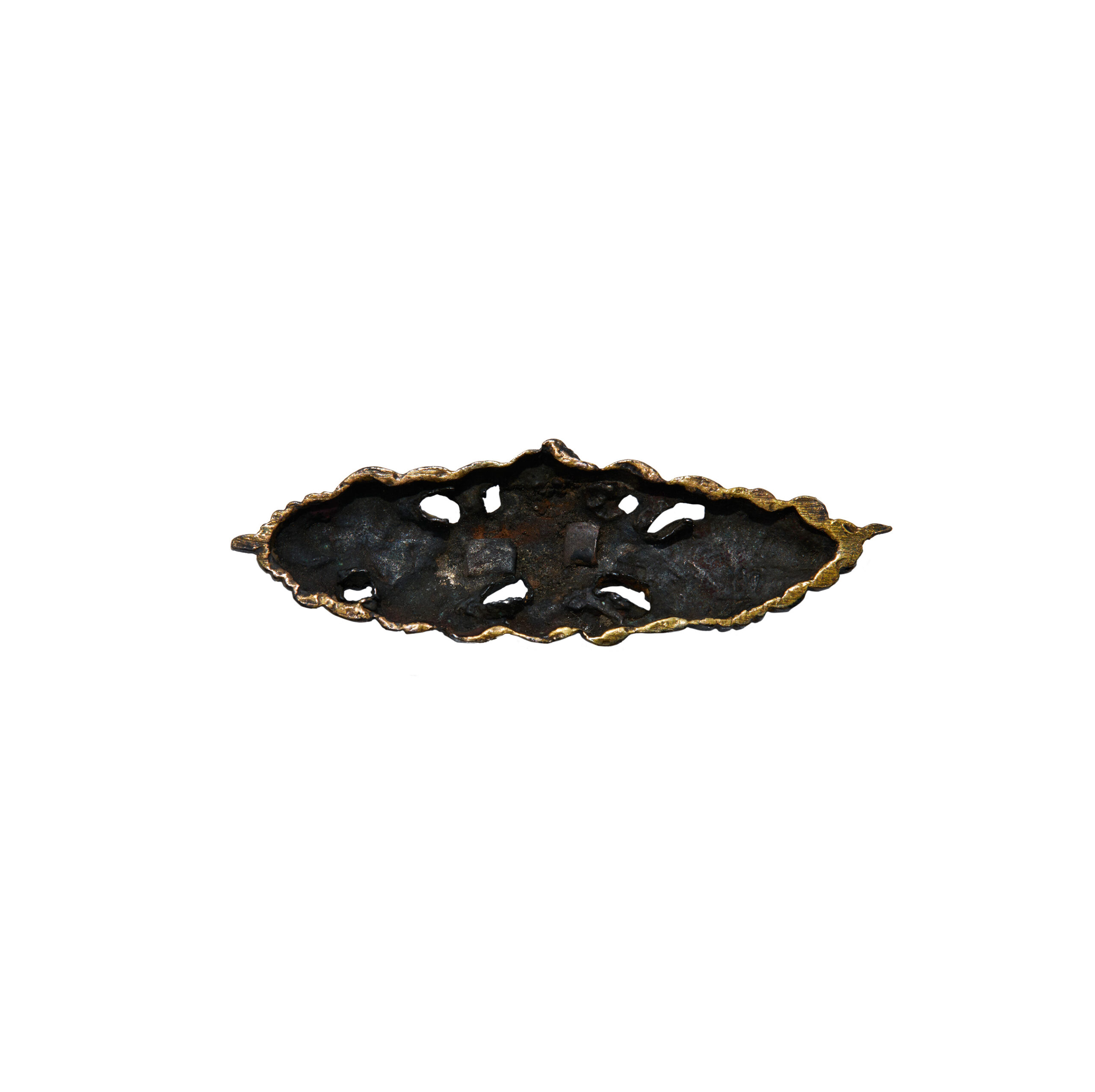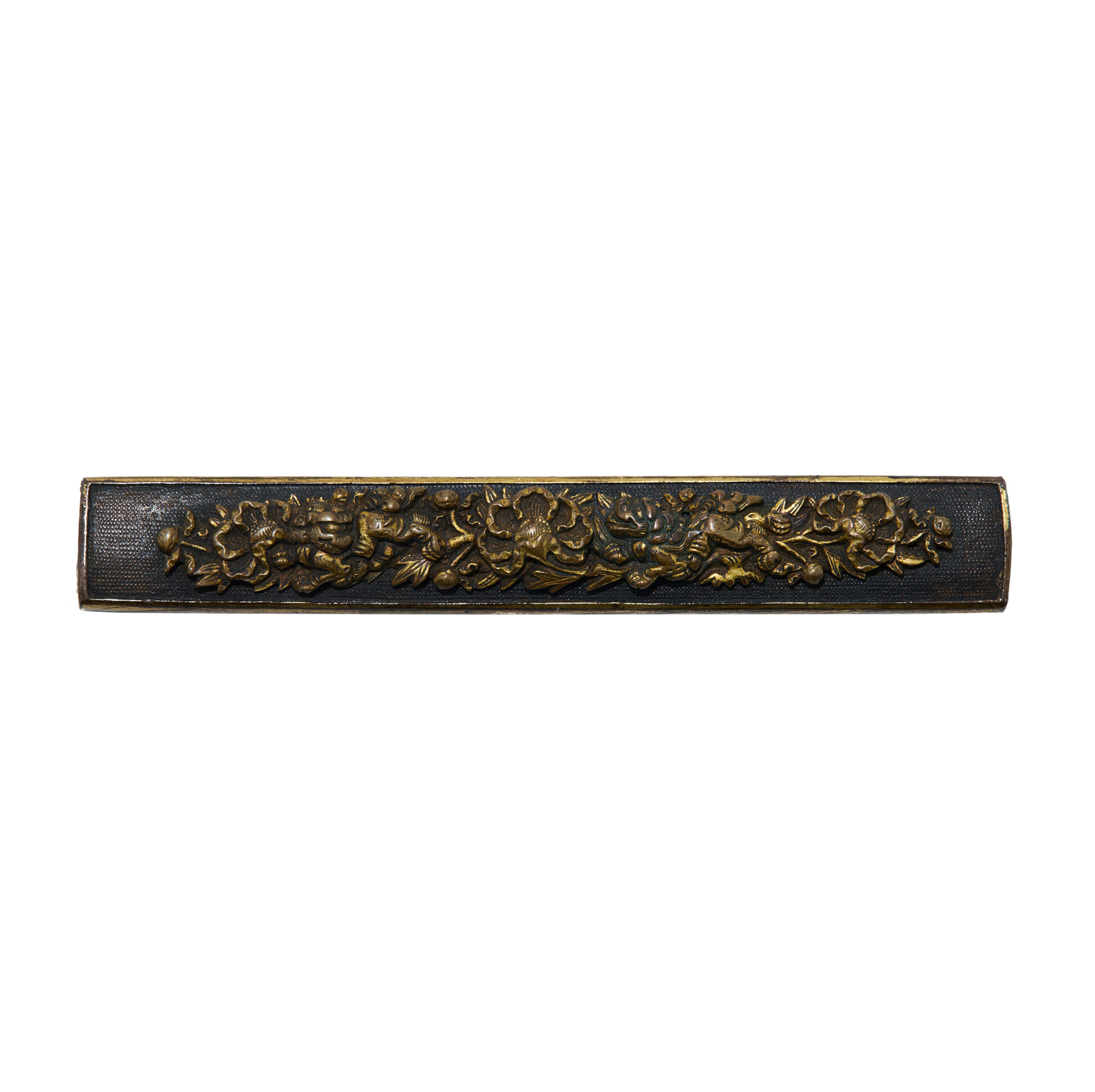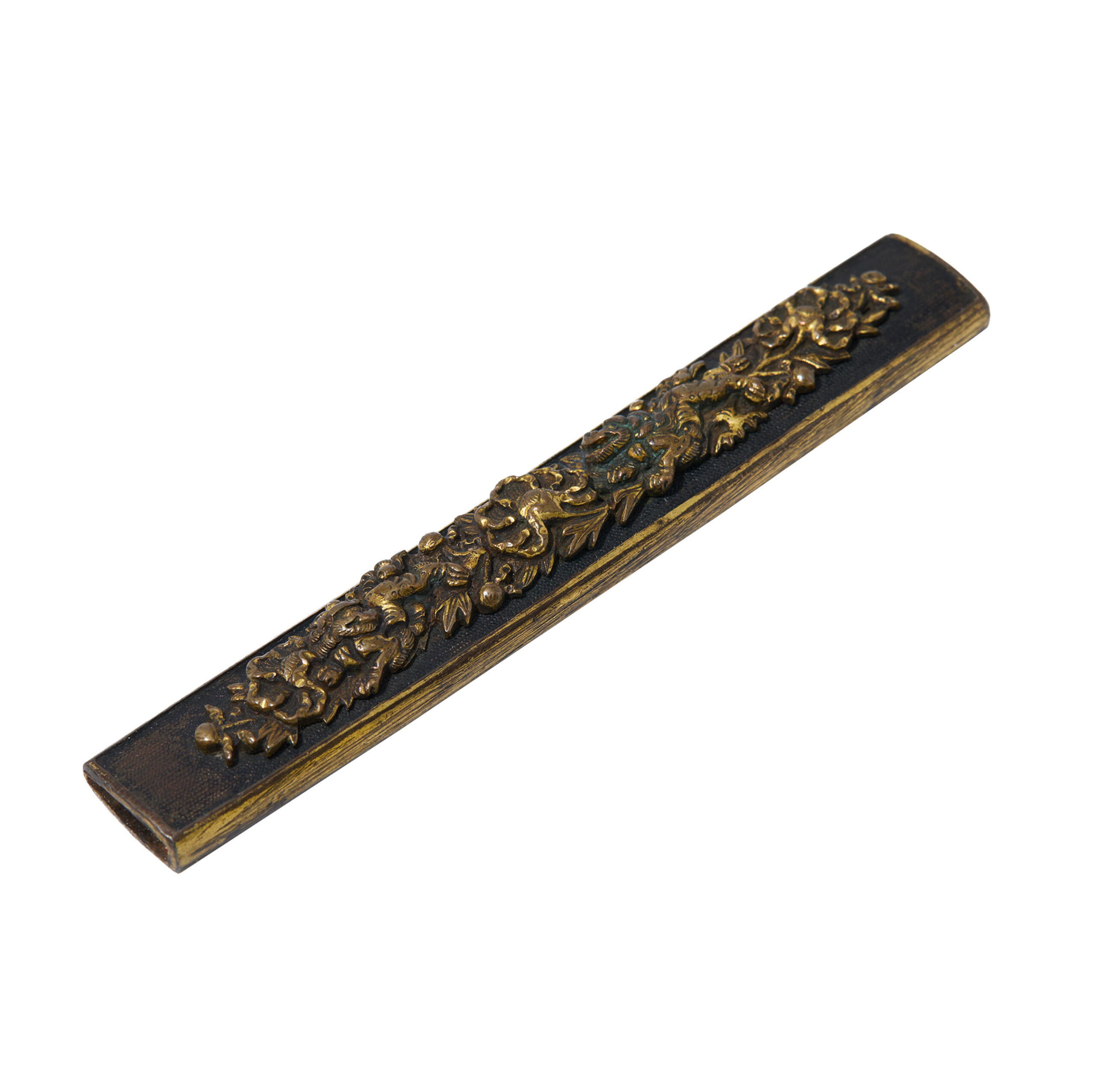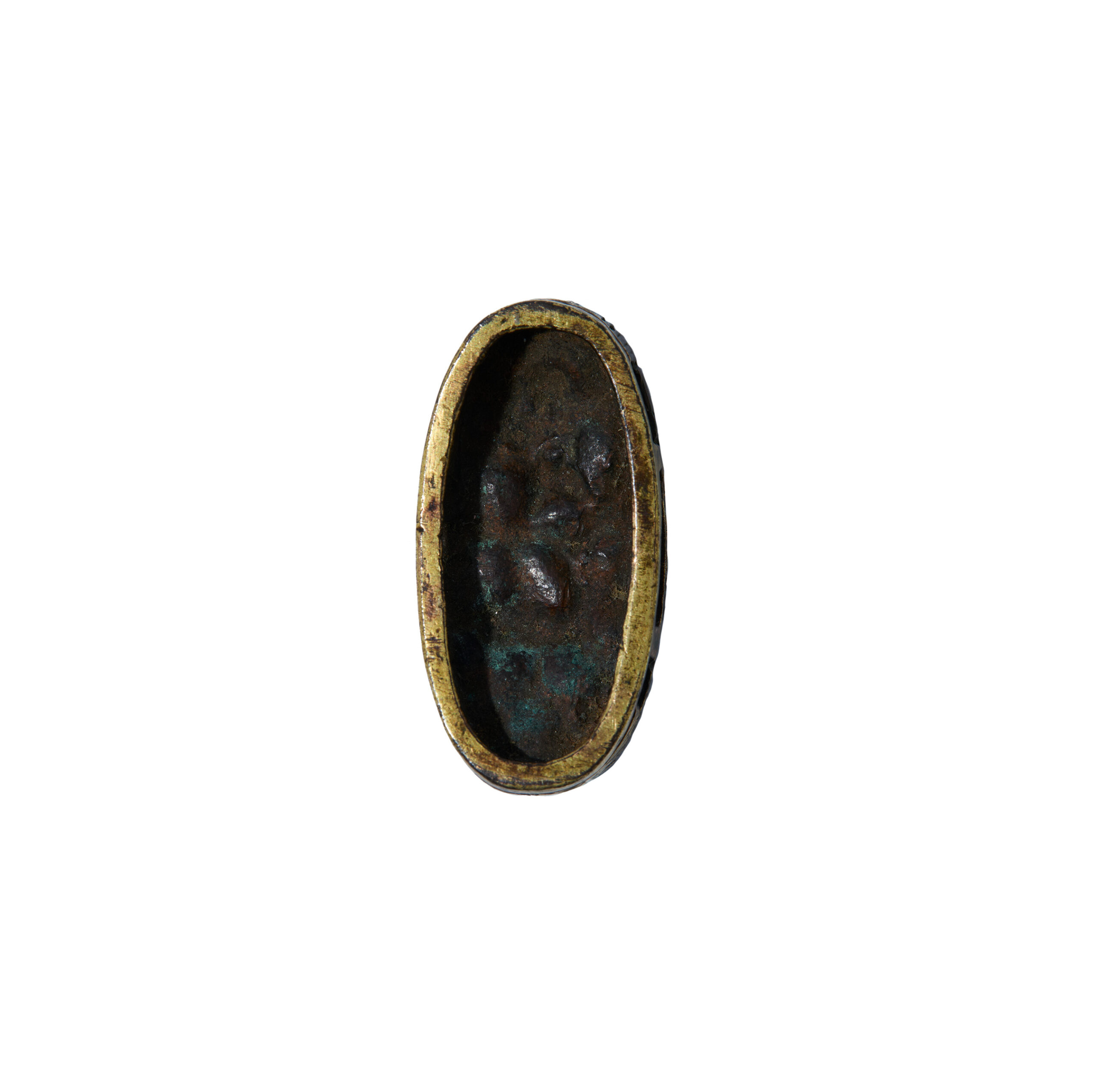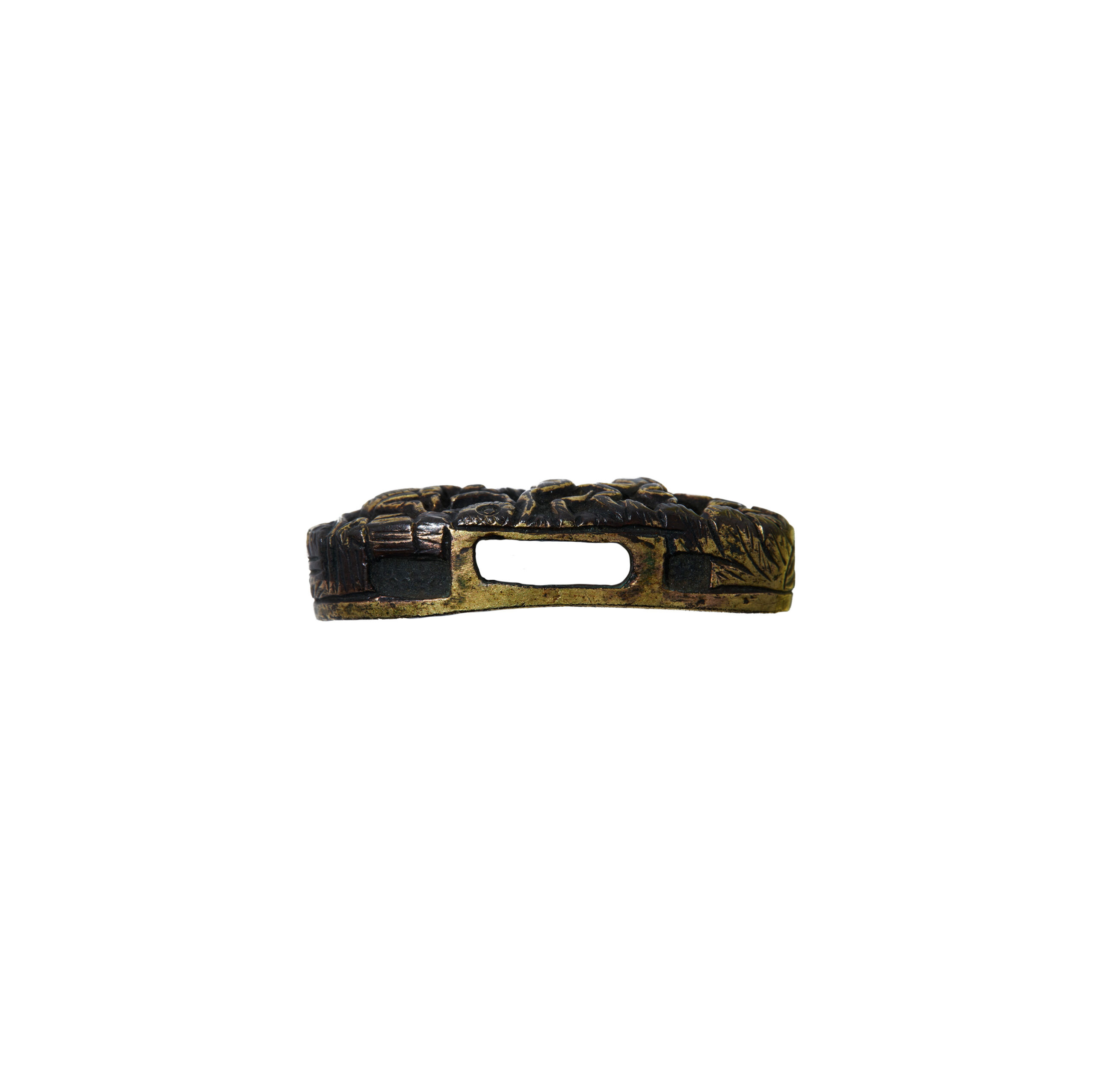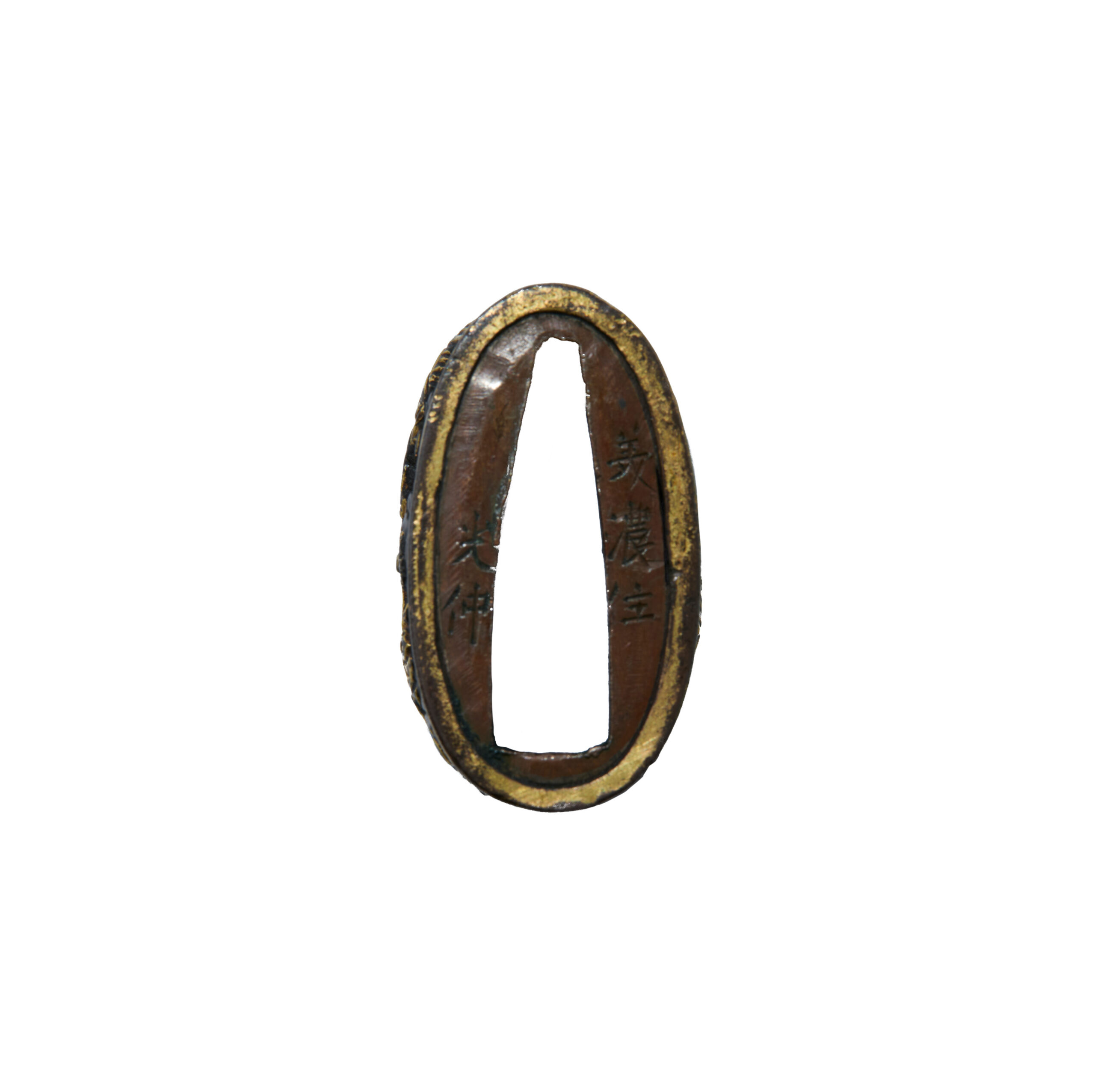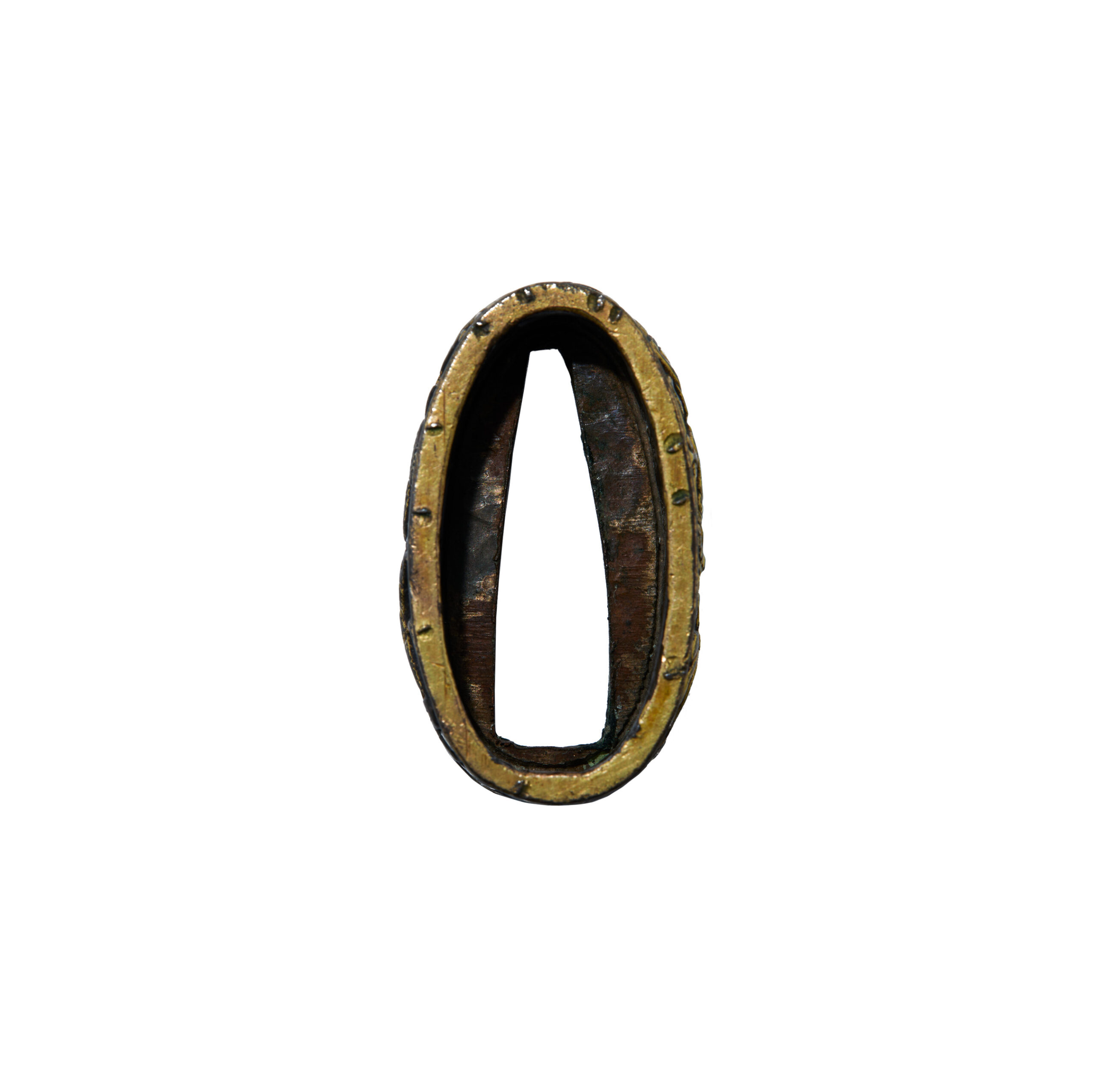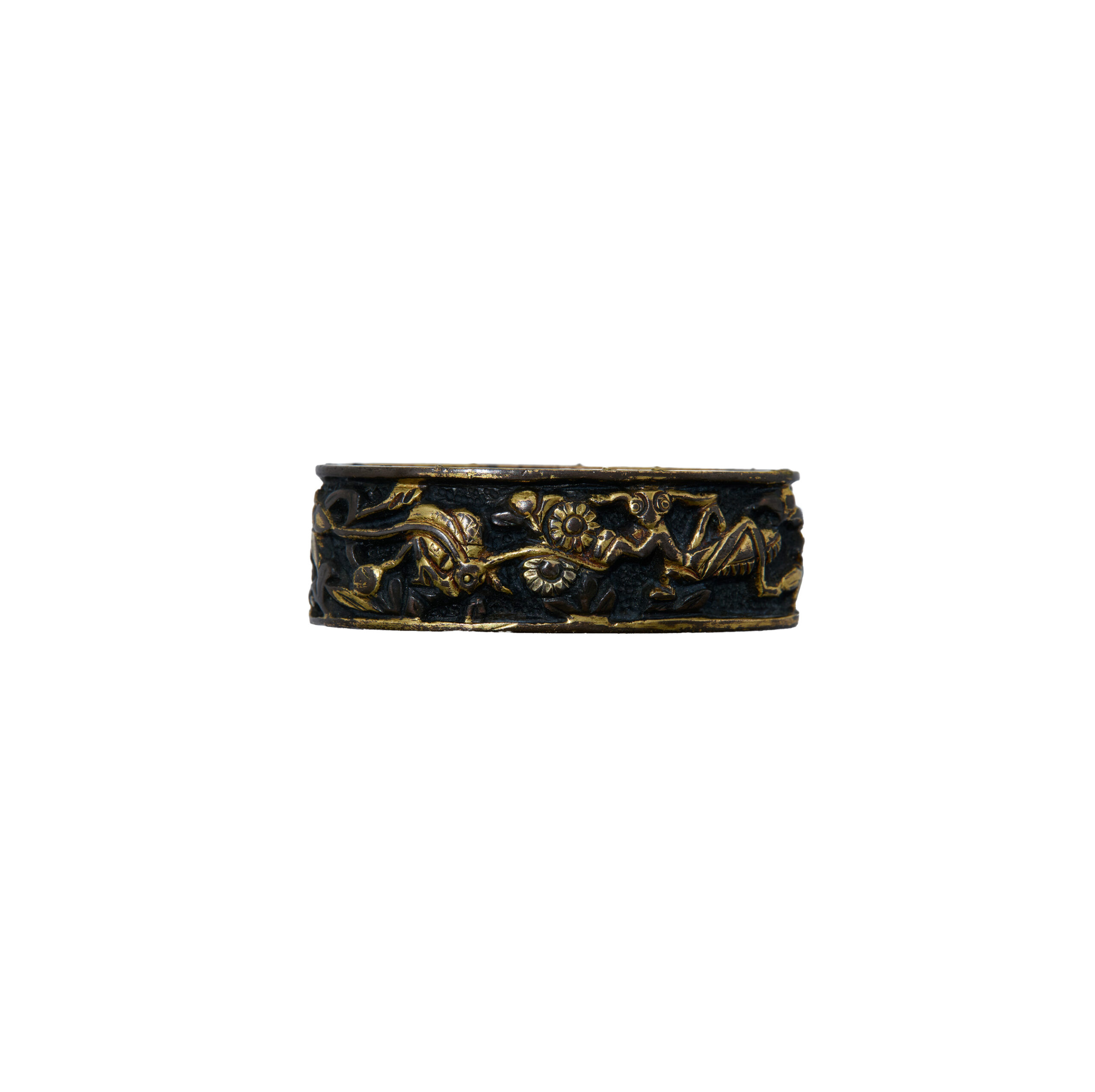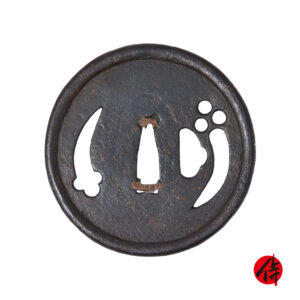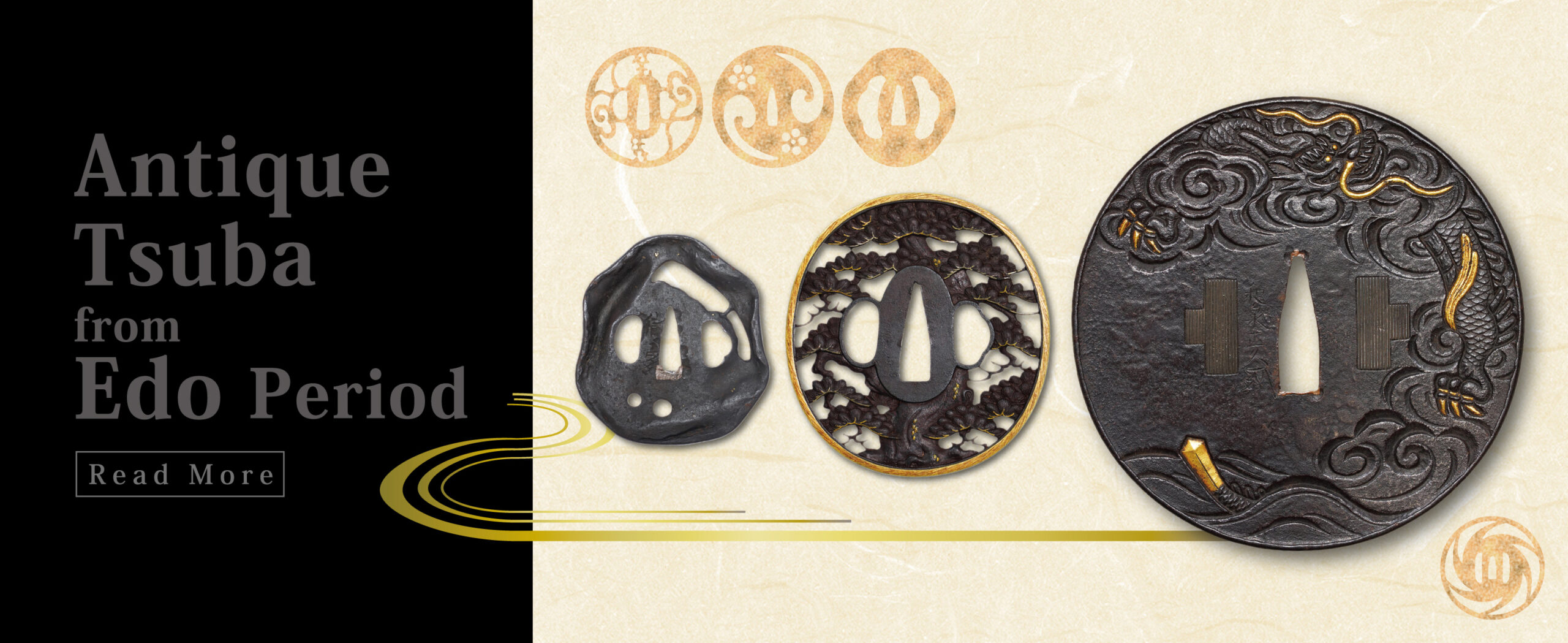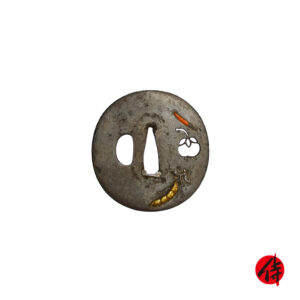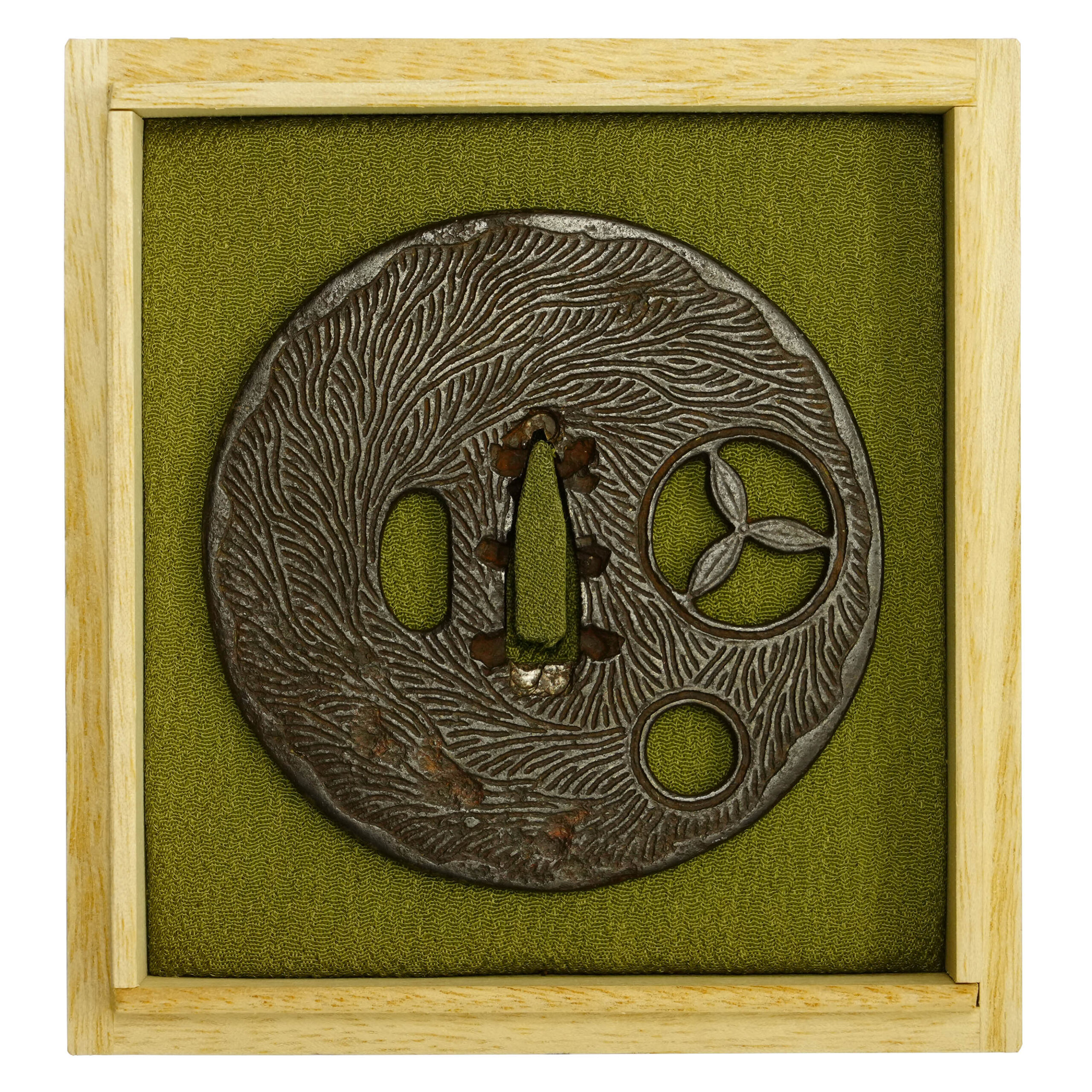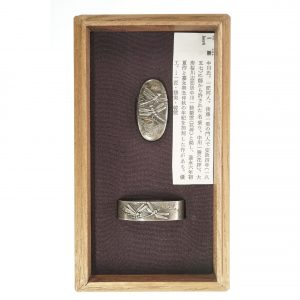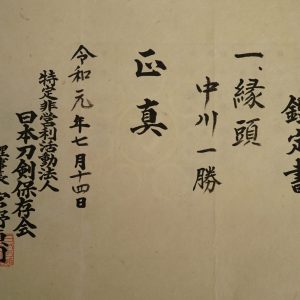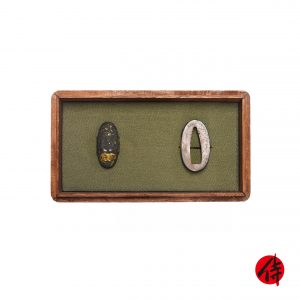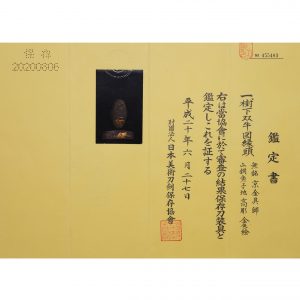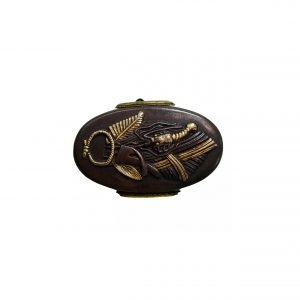Title: Awa-ho to Baika / Karajishi Botan /Akimushi
Description
This set of Menuki, Kozuka, and Fuchi-Kashira was made during the Edo period.
The Menuki features a design of millet ears (粟穂, Awa-ho) and plum blossoms (梅花, Baika). Millet symbolizes abundance and prosperity, while plum blossoms—blooming first after the harsh winter—represent endurance and renewal. The combination of these motifs conveys wishes for a fruitful life, hope, and an appreciation of the changing seasons.
The Kozuka is decorated with the motif of Karajishi Botan (唐獅子牡丹, lion and peony). The Karajishi is a mythical lion introduced to Japan from ancient China, symbolizing courage, protection, and dignity. The peony, known as the “king of flowers,” represents wealth, longevity, and elegance. According to an old tale, the lion fears a small insect that lives in its mane, but that insect dies when touched by the night dew that falls from peony petals. Therefore, the lion rests beneath the peony at night. From this story, the pairing of lion and peony came to symbolize the balance between strength and peace, or between courage and compassion—qualities highly valued by samurai.
The Fuchi-Kashira (pommel and collar fittings) depict a mantis (カマキリ, Kamakiri) and a bell cricket (鈴虫, Suzumushi). The mantis, whose folded forelegs resemble a praying monk, is also called Ogami-mushi (“praying insect”) and represents faithfulness and fertility. The bell cricket, known for its clear, bell-like chirping, has long been loved as a symbol of autumn. Since the Heian period (794–1180), the sound of insects has been appreciated by aristocrats and later by common people in the Edo period (1603–1868) as a way to enjoy the beauty of seasonal transitions.
Together, these motifs—millet and plum blossoms, lion and peony, mantis and bell cricket—embody themes of prosperity, vitality, and harmony with nature, expressing the refined aesthetics and spiritual ideals of the Edo-period samurai.
Menuki became more decorative than in early modern times. Since it had been attached under the Tsukamaki (the handle of the Japanese sword wrapped by thread), Menuki played an essential role in making it easier to grip the sword’s handle.
What is Kozuka?
Kozuka is the small knife stored in Kozuka Hitsu (groove of the sheath of the Japanese sword). Many Tsubas (handguards) have two holes to put Kozuka and Kougai (equipment for appearance) next to Nakagoana (a hole of the Tsuba to put sword) so that Samurai did not need to draw his sword out of the scabbard when he wanted to use Kozuka or Kougai. Initially, Samurai used it for cutting wood or attacking enemies in an emergency. It is said that Kozuka was used as a craft knife rather than a weapon.
The decorative designs of Kozuka were more emphasized than its practical use in the Edo period when Samurai society enjoyed one of the most peaceful times. Furthermore, there were many ornamental Kozuka and Kougai created by Japanese metalworkers.
What is Fuchi-Kashira?
Fuchi Kashira is a kind of metal fitting of the Japanese sword, which improves the handle’s strength. Fuchi Kashira is a combination of two parts; Fuchi and Kashira. Fuchi was put next to Tsuba (hand-guard), and Kashira was put on the grip bottle. Fuchi Kashira had developed not only its practicality but also beauty for the decoration of the Japanese sword.
Why is it that the sword mounting was important for Samurai?
The sword mountings of the Japanese sword have many kinds of decorations such as handguards (Tsuba), sword hilt (Menuki), pommel (Fuchi Kashira). The Japanese sword worked as a weapon and as an object to show who he was. For example, it shows their personalities and beliefs. You could say that it is like decorations for smartphones today. We recommend you zoom in on the pictures of the sword fittings. When you do so, you can see the skill of Japanese metal engraving techniques. They are mainly made of iron and copper with inlays of gold, silver, and bronze. When it comes to handguard (Tsuba), each one has a different outline and weight. These sword fittings that have lived with Japanese swords of the same age might be worth as much as the Japanese swords. They are inconspicuous parts of the Japanese sword. Nevertheless, if you are knowledgeable or particular about it, you will become a connoisseur of the Samurai.
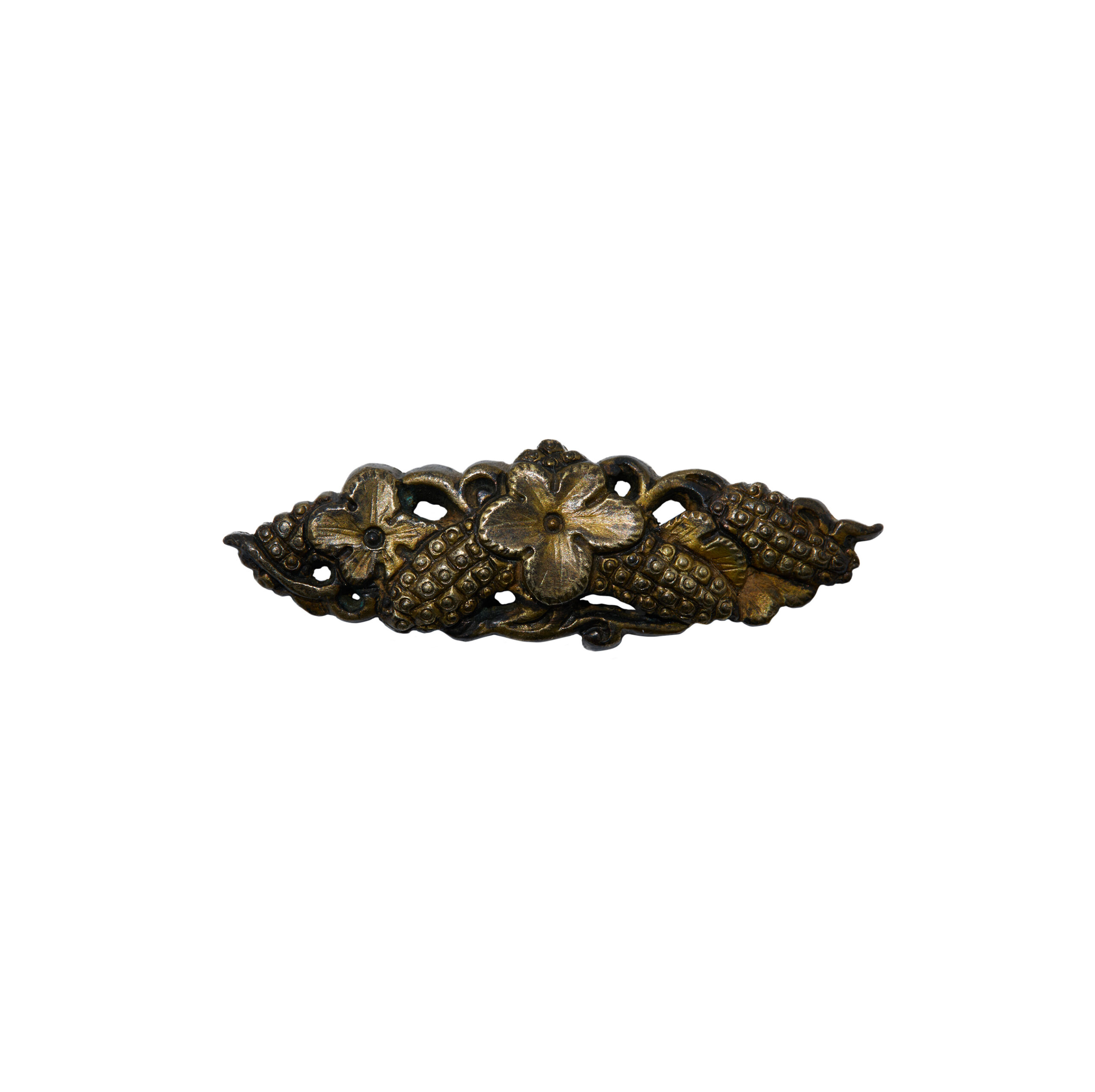
Menuki A
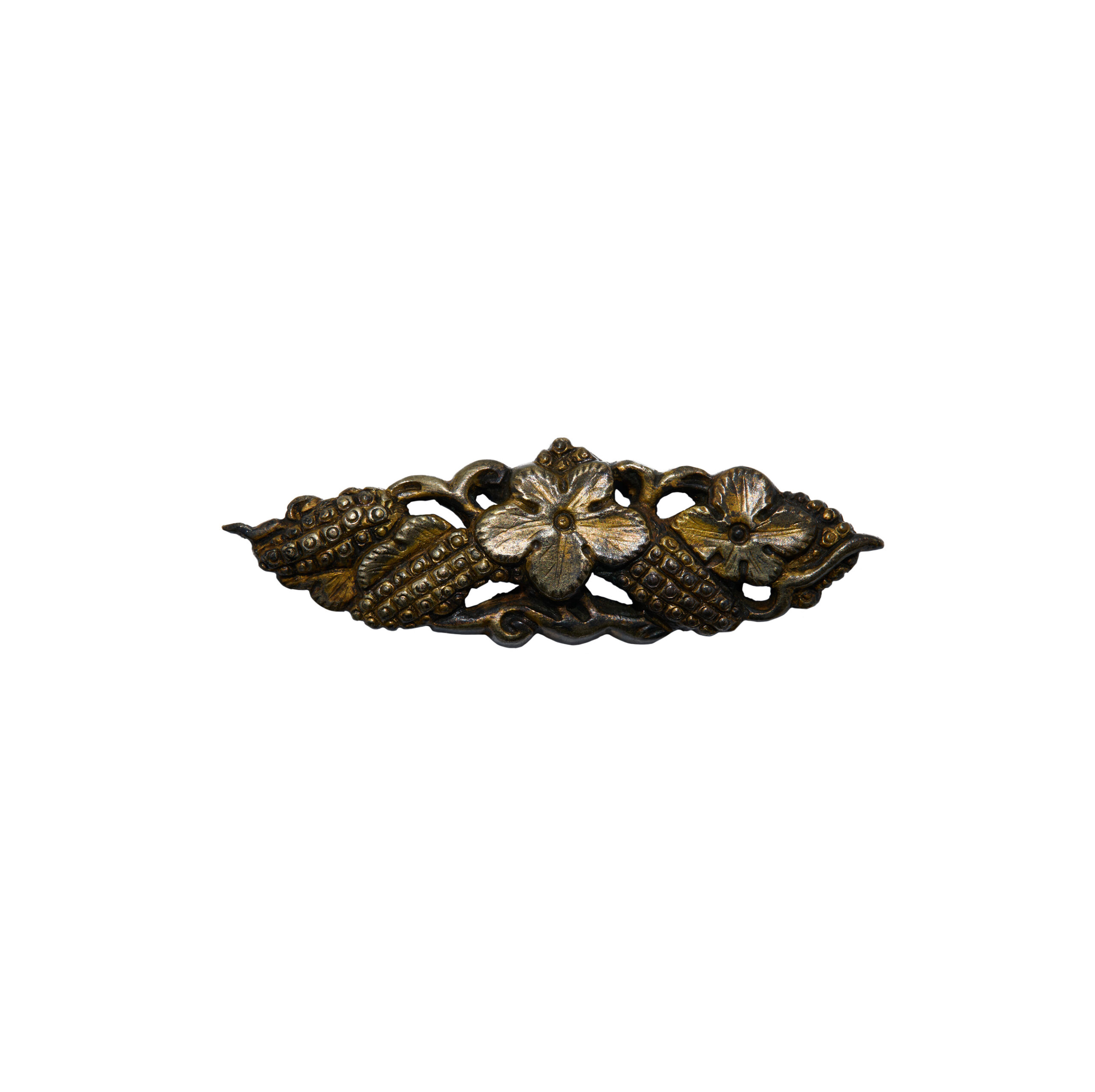
Menuki B

Kozuka
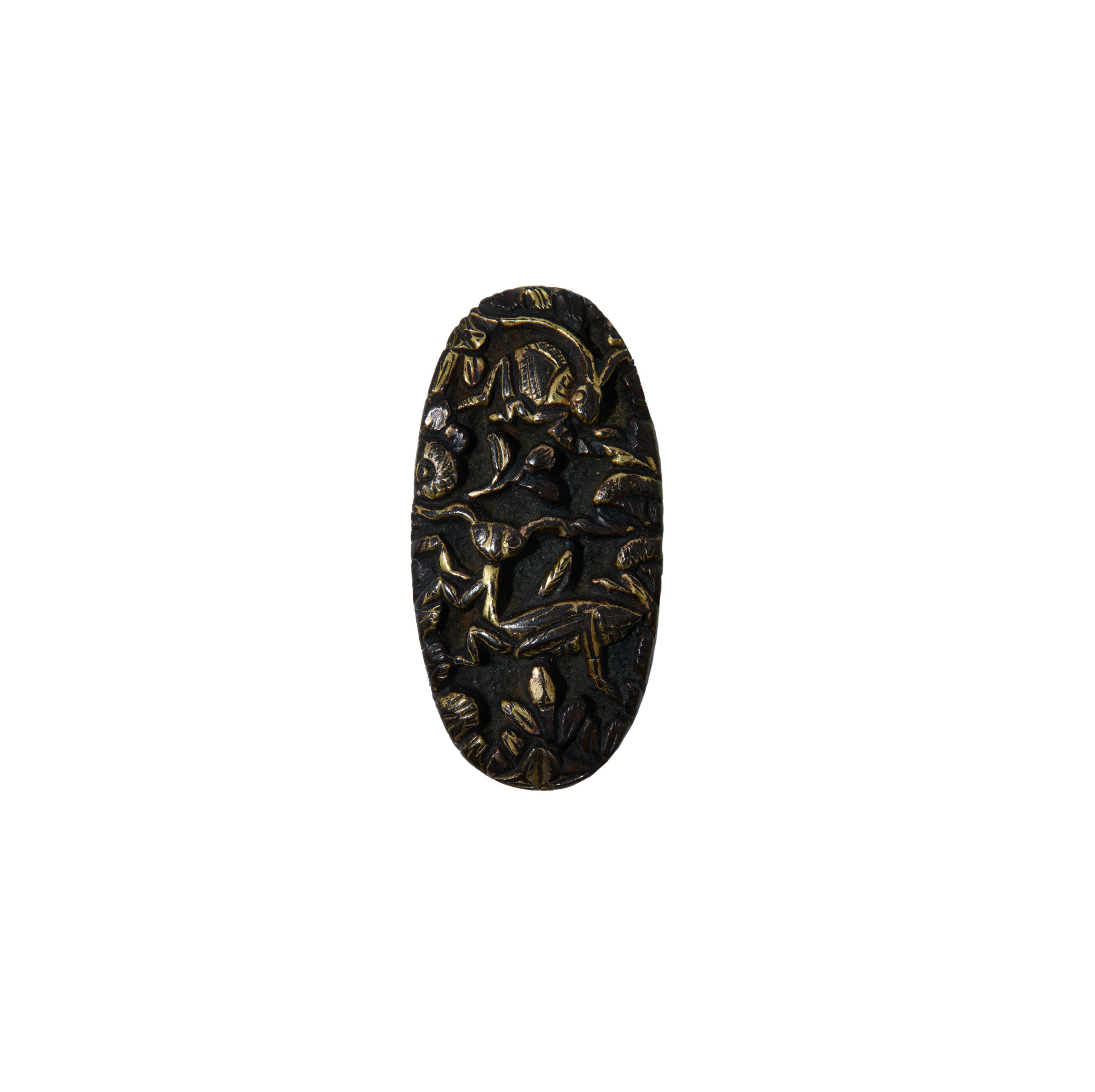

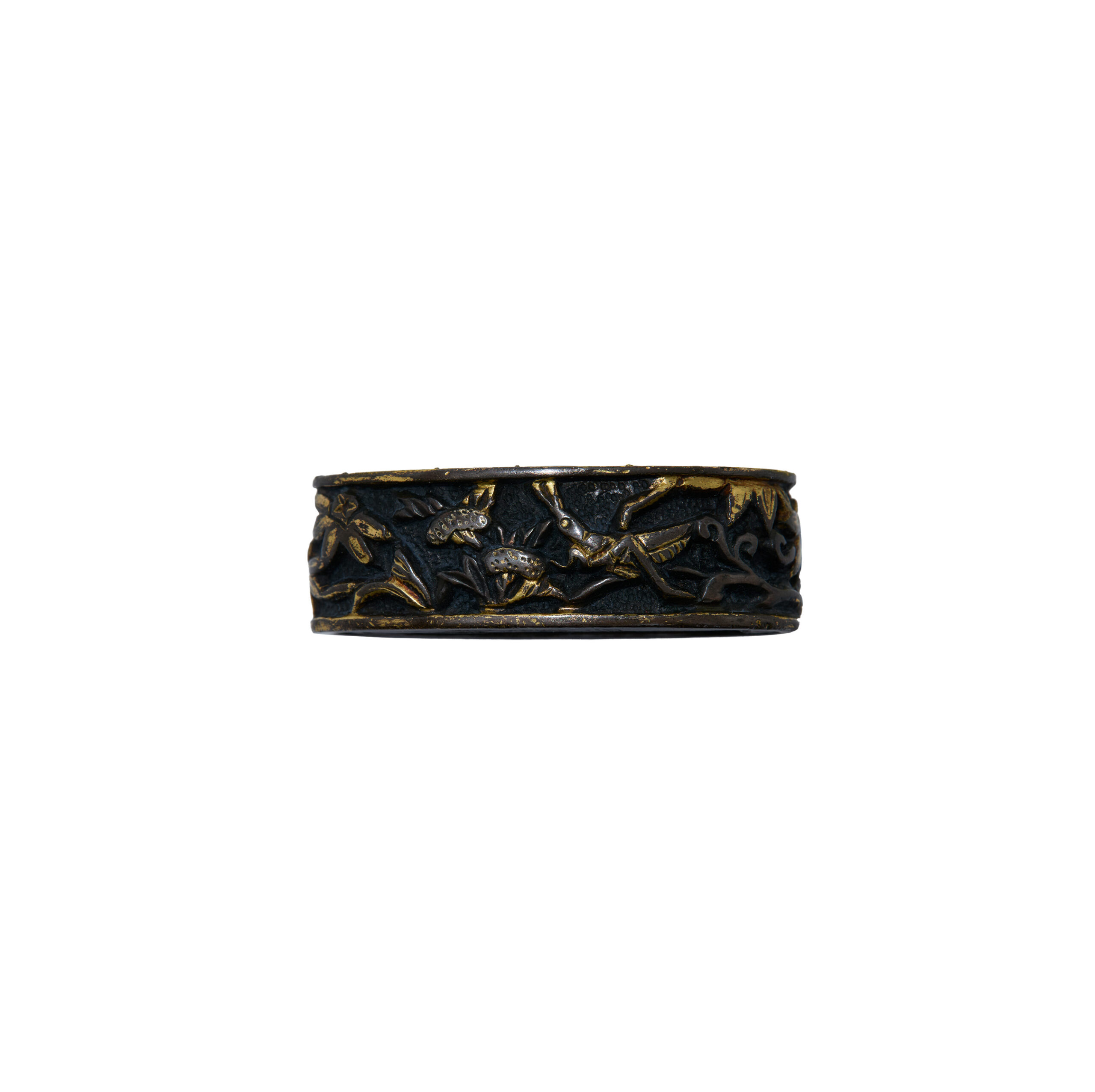
Fuchi-kashira
【About us】
Samurai Museum is located in Tokyo, Japan, exhibiting antique artifacts related to the Samurai history. Samurai Museum Shop is the place for those who are interested in Japanese culture and craftsmanship. We deal with antique Samurai swords/armor, traditional crafts made in Japan and so on.
【Payment method】
We accept payment through Stripe (Credit card), PayPal, Apple Pay or ChromePay, all of which are secure payment methods. Also, you don’t need to make an account on Stripe for the checkout. If you prefer other payment method, please contact us. You may either pay in JPY, USD, AUD, CAD, EUR, CHF or GBP. The price is set in Japanese Yen. Prices in other currencies are automatically calculated based on the latest exchange rate.

【Shipping duration】
We normally ship via EMS (Express Mail Service) provided by Japan Post. It usually takes at least 5-14 days to deliver the package after you place an order. Time of delivery is estimated as accurately as possible by the carrier but does not take into account any delays beyond our control such as by inclement weather, post office holiday seasons.
We offer Free International Shipping as long as we can ship your order by EMS. If you prefer other shipping carriers, please contact us.
We will inform you of the order’s tracking number via email. Please make sure you fill out your valid email address correctly.
*If you like to make sure if EMS shipping is available to your country, please contact us.

【How to make sure the condition】
Please keep in mind that what you are going to purchase is an antique item. We uploaded high resolution photos for you to check its condition thoroughly. If you like to see more photos with different angles, please feel free to contact us. We will be happy to send them to you so that you can make informed decision.
It is essential for us to know that you are happy with your choice of Tsuba and we are prepared to use the best of our ability to serve you.
【How to appreciate Tsuba】
While Tsuba is a small component of Japanese sword mountings, we would say it is one of the most conspicuous parts. Also, unlike the blade itself, Tsuba has a low risk of handling. Furthermore, it does not require a large space for storage. Thus, Tsuba is relatively easy to collect. Here we would like to propose a few ways to enrich your Tsuba experience after purchasing your favorite Tsuba.
-Inspection
Inspect and feel the artistry of Tsuba. You will be amazed by the maker’s work quality to make it look a great work.
-Find the right place to display
Tsuba would look great when displayed in the best way. Find the best place in your house, your office, or anywhere you like, so that Tsuba would be appreciated as much as you like.
-Learn the details
Tsuba reflects quite a lot of detailed features of its maker. Sometimes you can find the maker’s signature on Tsuba. Tsuba makers tried adding elaborate artistry to Tsuba. Many techniques were invented to achieve this goal, such as openworks, engravings, and gold/silver inlays. There were many schools that trained Tsuba creators, and each of them has different characteristics. You would enjoy knowing these differences and find your beloved style.
-Arrange in modern style
We want to propose to you the way that you could enjoy the Tsuba as jewelry. By stringing a cord into the center hole of the Tsuba, it could be worn as a necklace. This modern way would show you a new charm of Tsuba. Here are the examples of neckless.

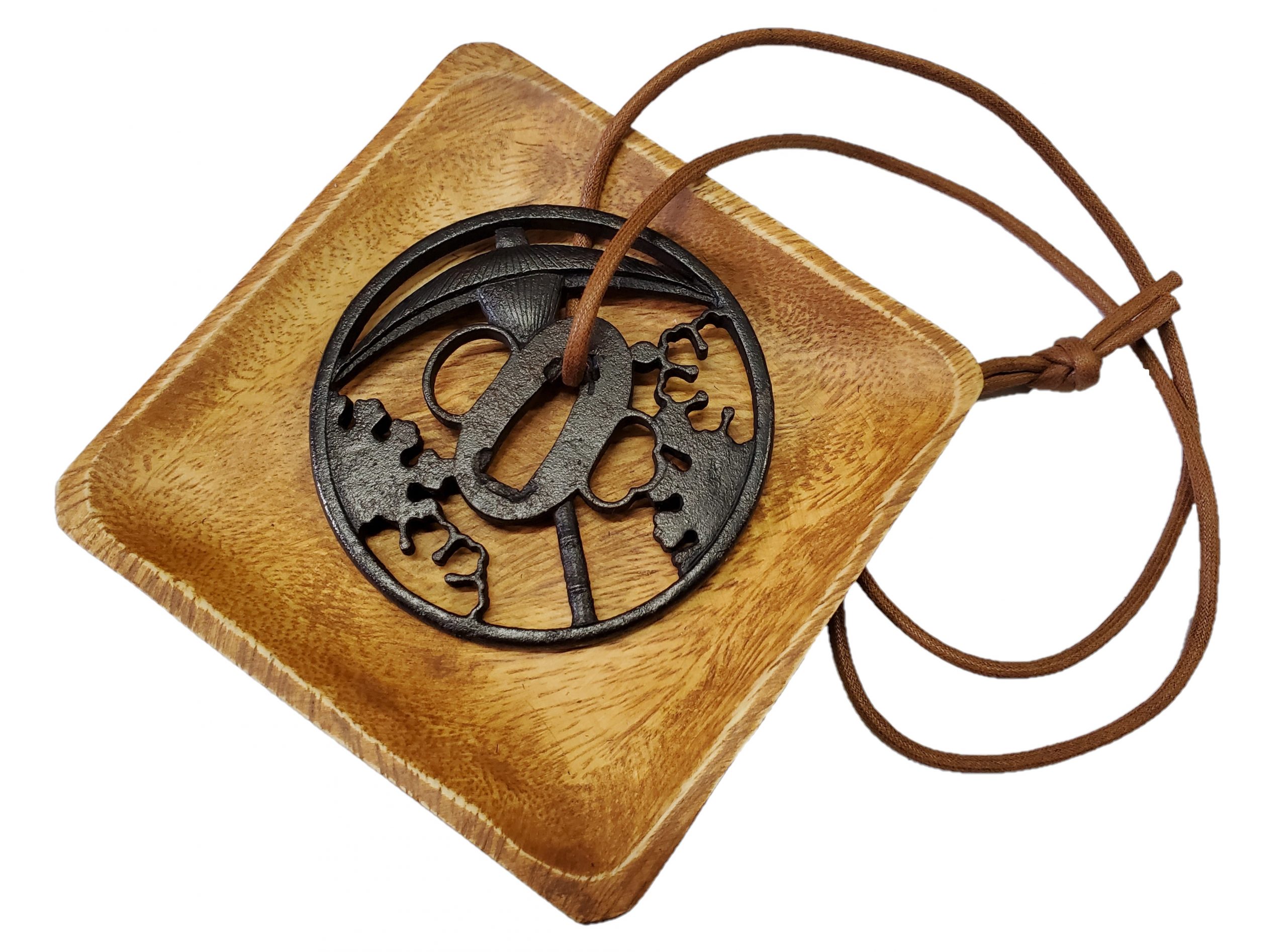
【Give the Tsuba as a special gift】
Are you looking for a special gift for a person who is interested in Japanese culture? We recommend you to give an antique Tsuba as a present for your significant other. Tsuba is an integral part of the Samurai sword, which was once a primary weapon for Samurai. Each Tsuba is a unique item and has a different design. We hope it would be a memorable gift. Now it is time for you to share the beauty of a piece of Samurai history with your family members or friends, for instance. Also, gift wrapping is available for Tsuba; it is for free. Here is an example of wrapping. For more information, please feel free to contact us. It is always our pleasure to serve you.
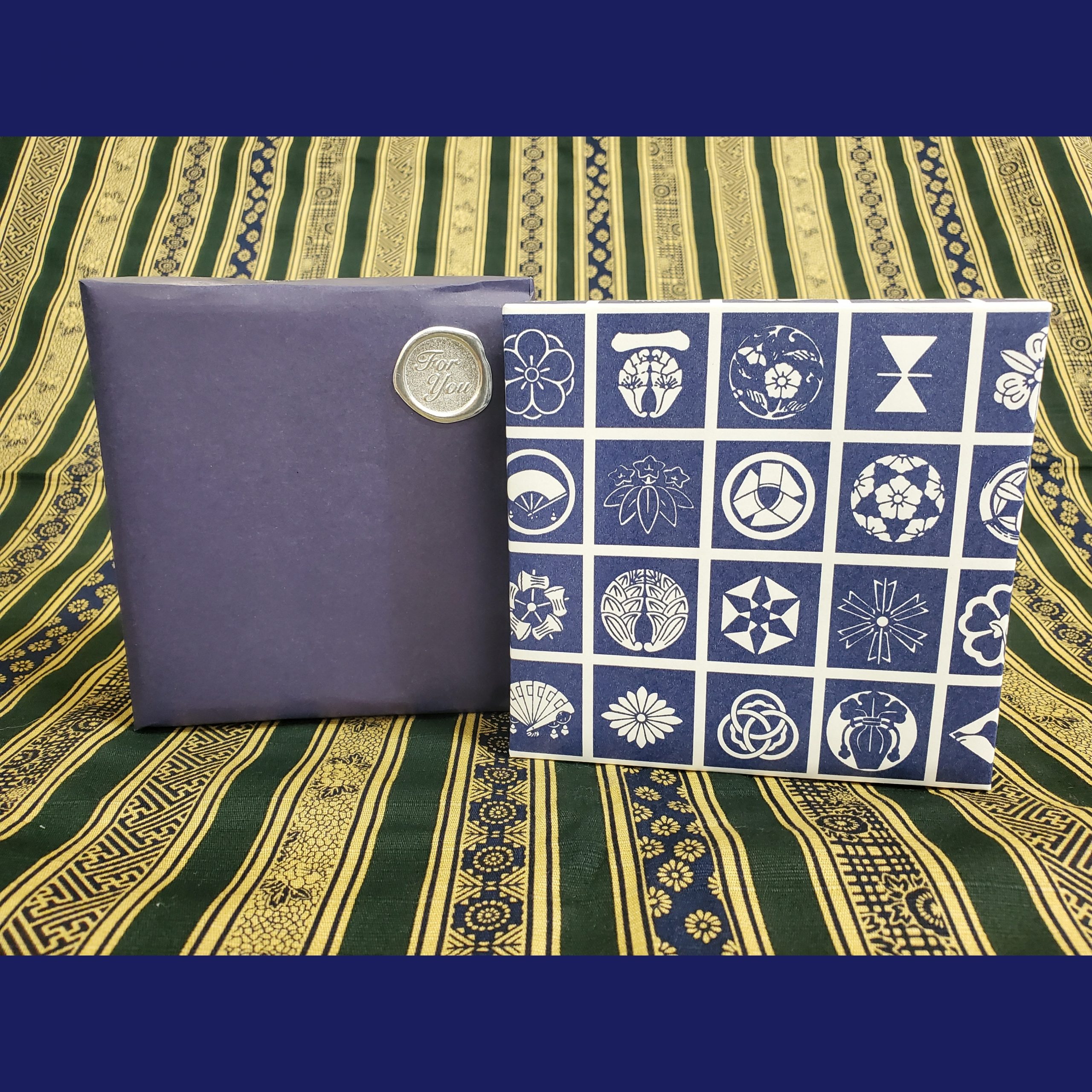
Would you like see some more Tsuba for sale? Please check the link below. We hope you can find your favorite Tsuba.
https://www.samuraimuseum.jp/shop/product-category/decorations/tsuba/
